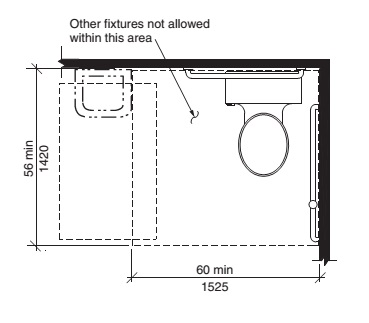ADA Compliance in Restrooms: Essential Features Explained
As we enter 2024, the standards for bathroom design are evolving to meet contemporary needs, emphasizing accessibility, sustainability, and user comfort. The shift in requirements reflects a broader societal recognition of the importance of inclusivity and environmental responsibility in all spaces, especially those as essential as bathrooms.

Accessibility continues to be a paramount concern in bathroom design. The guidelines established by the Americans with Disabilities Act (ADA) remain influential, ensuring that facilities accommodate individuals with diverse needs. In 2024, there is a strong emphasis on features such as grab bars, accessible toilets, and sinks designed for wheelchair users. Adequate knee clearance and maneuverability around fixtures are critical, allowing individuals to navigate the space comfortably. The height and positioning of sinks and toilets must cater to a variety of user needs, reinforcing the idea that all individuals should have equal access to restroom facilities.
Sustainability is another key focus shaping bathroom learn about ada vanity requirements here this year. As awareness of environmental issues grows, there is an increased demand for water and energy-efficient fixtures. Low-flow toilets, faucets, and showerheads are becoming standard in new designs, helping to conserve water without compromising performance. The integration of smart technology, such as motion-sensor faucets and energy-efficient lighting systems, not only enhances convenience but also supports eco-friendly practices by reducing consumption.
Material choices in bathroom design are also shifting toward sustainability. In 2024, many designers are opting for eco-friendly materials that minimize environmental impact. This includes using recycled or sustainably sourced materials for countertops, flooring, and cabinetry. These choices not only contribute to a greener planet but also promote healthier indoor air quality by reducing the presence of harmful chemicals often found in traditional materials.
The aesthetic aspect of bathrooms is also undergoing transformation. Modern bathrooms are increasingly viewed as personal sanctuaries, places for relaxation and self-care. Natural light, calming color palettes, and the incorporation of biophilic design elements, such as plants and natural materials, contribute to a soothing atmosphere. Thoughtful design can transform a bathroom into a tranquil retreat, enhancing overall well-being.
Safety remains a crucial consideration in 2024 bathroom design. Anti-slip flooring, strategically placed grab bars, and well-designed lighting are essential features that enhance user safety. As awareness of fall risks, particularly among older adults, increases, designers are incorporating these elements to ensure bathrooms are not only functional but also secure and accommodating for all users.
In conclusion, the bathroom requirements for 2024 reflect a comprehensive approach that prioritizes accessibility, sustainability, and user comfort. By integrating modern technology, eco-friendly materials, and thoughtful design principles, bathrooms are evolving into inclusive spaces that meet the needs of all individuals. As architects and builders embrace these changes, the goal remains clear: to create bathrooms that are efficient, welcoming, and conducive to the well-being of every user.